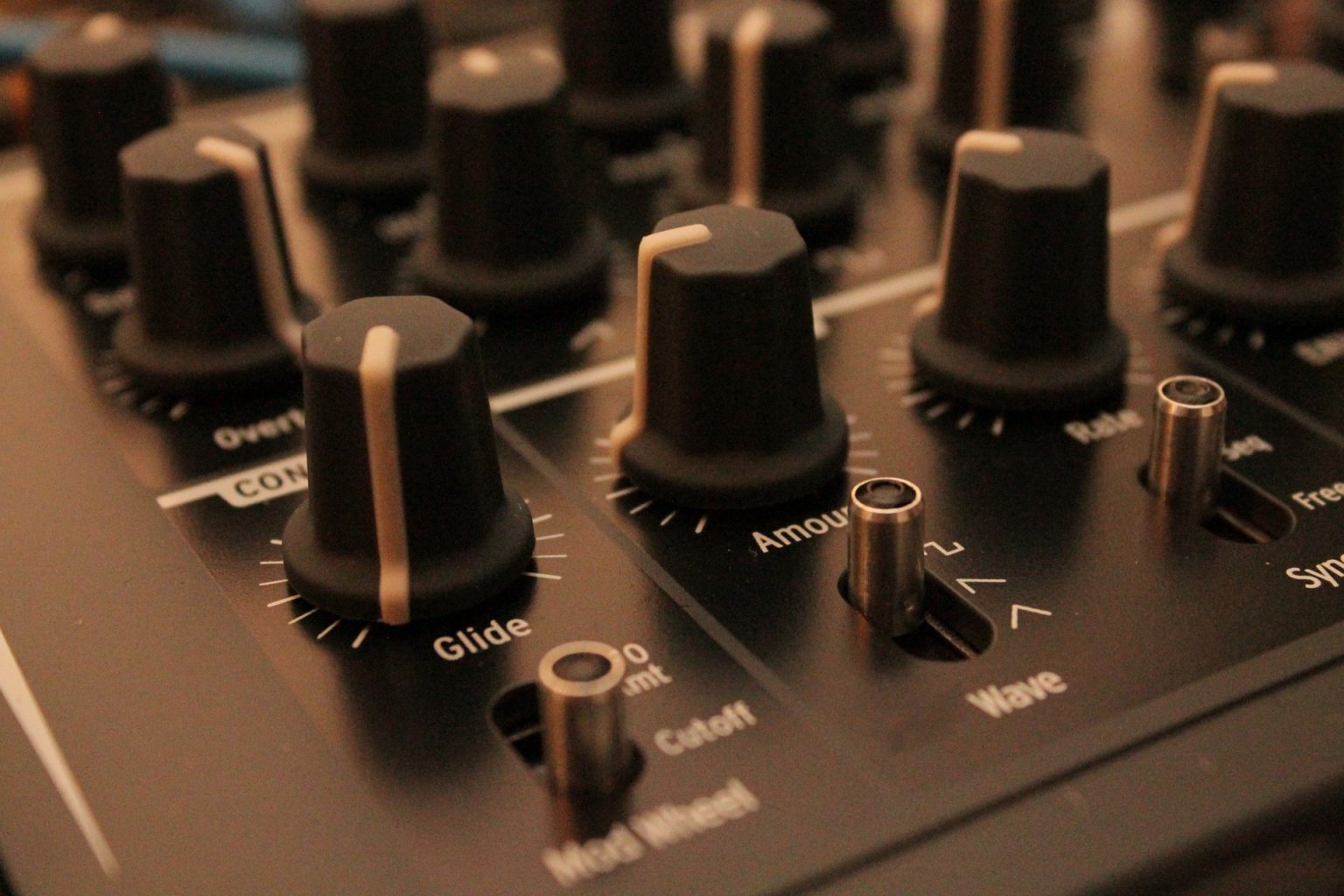Let’s continue down the signal path of a subtractive synthesizer. In part 9 we got some insight into oscillators and other common parameters. In this part, we’ll discuss filters. But first, let’s talk quickly about the mixer.
Mixer

Since most synthesizers have multiple oscillators, we need some way to sum all outputs together. This is done with a mixer. Some synthesizers like the Minimoog have a dedicated mixer section while other synths feature output volume knobs per oscillator. A filter only has one input so that’s why we need a mixer.
Filter
After the mixer, the signal passes through the almighty filter. This is the heart of a subtractive synthesizer. The most used filter is a low pass filter, which passes low frequencies and blocks high frequencies. Also known as the high-cut filter.
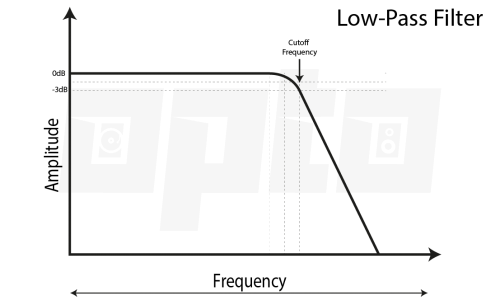
Another common type of filter is the high pass filter, which passes high frequencies and blocks low frequencies. Also known as the low-cut filter.
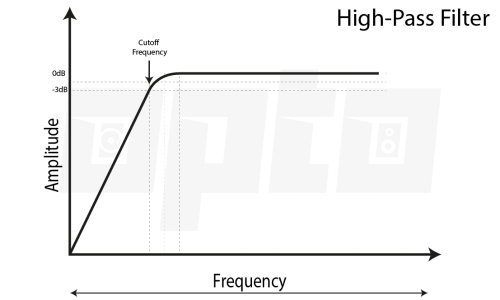
The third type of filter is made by combining both lowpass and highpass filters to form a bandpass filter. A bandpass filter passes only one band of frequencies. Subtractive synthesis gets its name from these filters because they subtract frequency content from the oscillators.
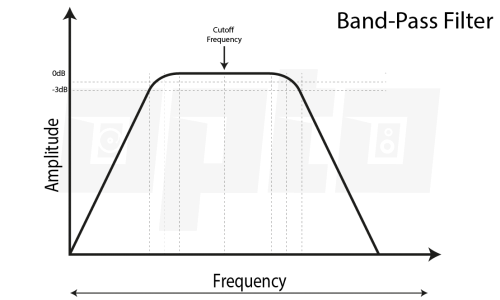
Alright, so a low pass filter passes low frequencies. But what frequencies does it pass and what frequencies get filtered out? This depends on what is called the cutoff frequency. The cutoff frequency is the point at which a filter starts to work. If you set the cutoff frequency of a low pass filter at 200 Hz it will attenuate frequencies above 200Hz and pass frequencies below 200Hz.
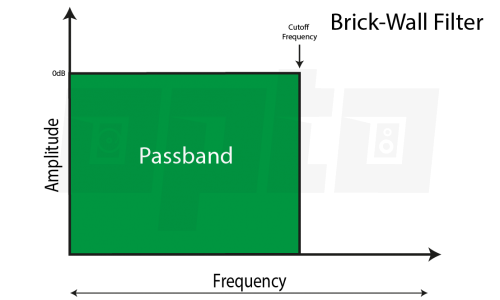
An ideal filter lets frequencies up to 200Hz pass unaffected and completely removes every frequency from 201Hz and up. This kind of brick wall filter is purely theoretical however and doesn’t exist in our practical world.
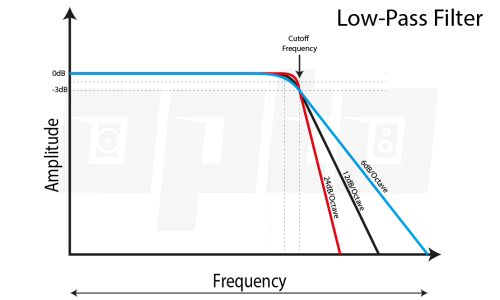
Most low pass filters slowly attenuate more with each octave. The steepness or slope of a filter is often described in terms of dB per octave. Common filter types are 6dB/octave, 12dB/octave and 24dB/octave. Sometimes filters are also described in terms of poles. This comes from filters used in analog electronics where one pole is equal to a 6dB/octave filter, 2 poles is equal to a 12/dB/octave filter and a 4 pole filter is equal to a 24dB/octave filter.
I’ve said above that the filter starts working at the cutoff frequency, but this is actually not true. The filter starts attenuating a little bit before the cutoff frequency. The cutoff frequency of a filter is actually at what is called the 3dB down point. This has to do with the behavior of analog filters and has since been adapted to digital filters as well.
Resonance
In addition to the filter cutoff frequency, you also get access to a resonance control. Filter resonance is used to emphasize the cutoff frequency by boosting frequencies at the cutoff point. Some filters allow you to set the resonance so high that the filter will start to oscillator by itself. The resonance is boosting so much that it starts to feedback which creates a sine wave at the cutoff frequency. In addition to emphasizing the cutoff frequency, a higher resonance also steepens the slope of the filter to compensate for the boost. Resonance is sometimes labeled as Q (often found in equalizers).

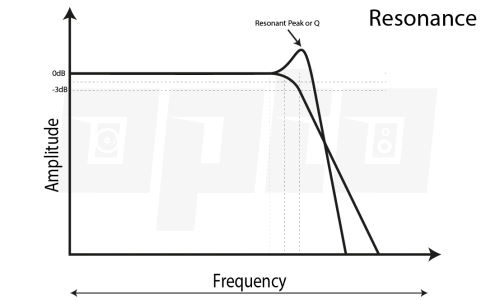
Resonance is often heard in Acid House basslines which were made on the classic 303 bass-synthesizer. Using resonance with a highpass can also be helpful to boost low frequencies when the filter cutoff is set to a low cutoff point.
Resonance can also be used in combination with a bandpass filter. The cutoff frequency of a bandpass filter lies in the middle. When you emphasize the cutoff frequency, the bandpass filter also gets narrower at the same time, while becoming wider with a lower resonance setting.
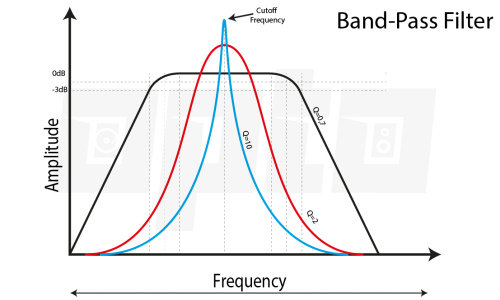
Drive
Some synthesizers also provide a drive function. This adds some subtle saturation or distortion to emulate analog filter designs. Both Sylenth1 and Serum have this function.

Key Tracking
The last important parameter of a filter is key tracking. This is a function that allows the filter cutoff frequency to follow the notes you play. The key tracking parameter often works as a percentage between -100% and +100%. If you set key tracking to +100% the filter cutoff will move up the higher you play on the keyboard. This is useful if you want higher notes to be heard as clearly as lower notes. By using key tracking of -100% the filter cutoff will decrease if you play higher on the keyboard. This will darken the sound as you play higher notes.

You can hear key tracking in action by setting the resonance to full so the filter starts to resonate. If you now set key tracking to -100% or +100% you will hear the notes change as you move up and down the keyboard. With some synthesizers, this means you can use the filter as an extra oscillator!
Lowpass, highpass, and bandpass filters are the 3 most used filter types in synthesizers. Other filters exist, like notch filters and comb filters, but most filters are different emulations of their analog versions.
Now, it’s fun to play around with the filter cut off by hand, but what if we want to automate the filter cutoff every time we press a key? This can be done by using envelopes and LFO’s. Which we’ll discuss in part 11 of this series about music production basics.

